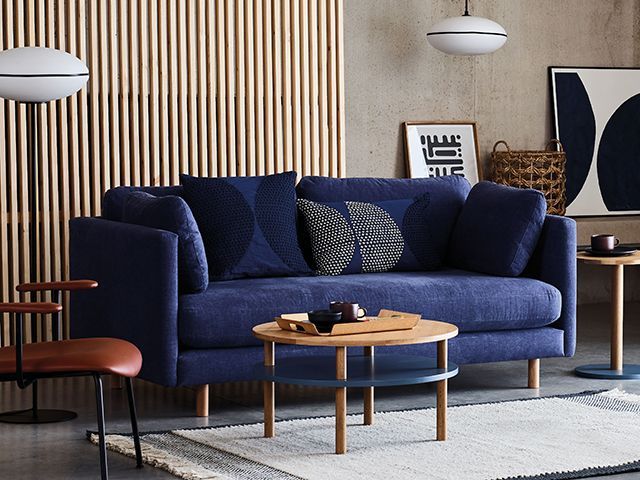
Photo: Habitat
Everything you need to know before buying a new sofa
Wondering how to choose a sofa? There’s a lot to consider. You might have found the most beautiful design in just the right shade, but if it arrives and it doesn’t fit, or you find it unsupportive or uncomfortable, then you won’t be sitting pretty. From size and shape to fabric and filling, here’s Good Homes’ complete sofa buying guide…
This article contains affiliate links, from which we may earn a small commission
Sofa styles
There are a variety of sofa styles, each best suiting different uses and homes. Here’s a quick guide:
- Modular: Modular models enable you to create your own sofa set-up and provide the most flexible living solutions. They can be positioned in different configurations, are easy to move around and ideal for getting in through narrow doors or up stairs. Sofology offers a range of modular sofas.
- Corner sofas: Corner styles are good for large households and for defining living spaces in an open-plan scheme. They are available in left- and right-hand chaise configurations. They can also work in smaller spaces to maximise you seating space – compact models are available.
- Chaise sofas: Chaise-style sofas are perfect for stretching out on. Look for designs that include much-needed storage space.
- Sofa beds: Sofa beds come in many forms, with various mattress options. Threefold designs usually have foam mattresses that may not be ideal for everyday sleeping, but are fine for the occasional guest sleepover. Consider a two-fold option that allows for a more comfortable, deeper, base for sleeping on if it is going to be used on a regular basis. Check out our pick of the best sofa beds.
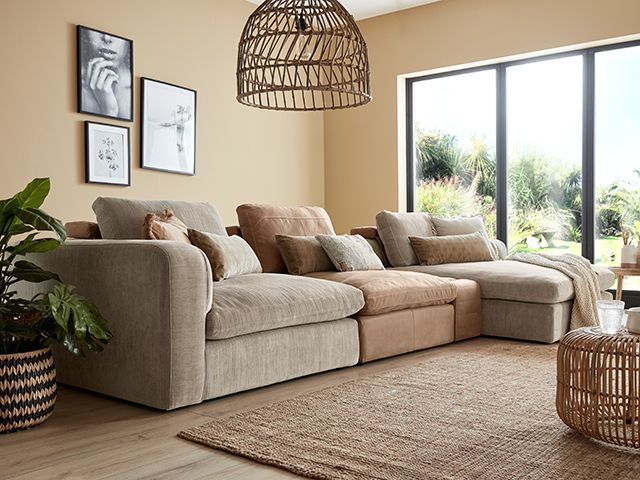
Photo: Sofology
Sofa size
When it comes to your sofa, size matters. You may be tempted to opt for the biggest possible for your space to ensure maximum comfort and to get the most bums on seats, but an oversized sofa will cannibalise the sense of space in your living room.
So how do you go about picking the right size? Always try to leave space between your sofa and the surrounding walls and furniture so that it doesn’t feel squashed in and cramped. Take note of measurements before you buy, and mark them out against your current sofa, or in the empty space, so that you can see how it fits in context of the layout of your space and the other furniture. For small rooms, choose sofas rasied on legs and make sure coffee tables are placed around 45cm away from sofas – too little space and it will feel cramped, while too much distance will feel disjointed.
While we’re talking size, you always have to remember to check the delivery dimensions for your sofa before you buy to ensure it will fit through your property’s access points. Many sofas comes in one-piece, making them one of the most tricky deliveries to get into your home, but if you have a problematic entryway, consider something like Snug’s Sofas in a Box, which come flatpacked and can be assembled in 3 minutes without tools.
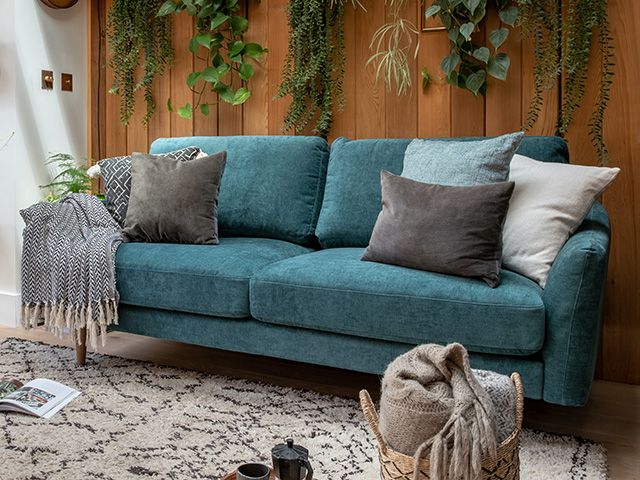
Photo: Snug
Sofa filling
You may not have given much consideration to what’s inside your sofa, but this is one of the factors that most effects the comfortability of your sofa. The most common sofa fillings are foam, feather and fibre, all of which come with advantages and disadvantages.
Foam is used in the construction of most sofas, but you can also have cushions made from the material. These cushions hold their shape wonderfully, but are a more firm option.
On the other hand, feather and fibre fillings are super soft, perfect for sinking into after a long hard day. However, they do not hold their shape well, and will need almost constant re-plumping.
Your best bet? A filling hybrid. The likes of this Oscar sofa from Sofa.com has foam cushions wrapped in a layer of feathers, offering you the best of both worlds.
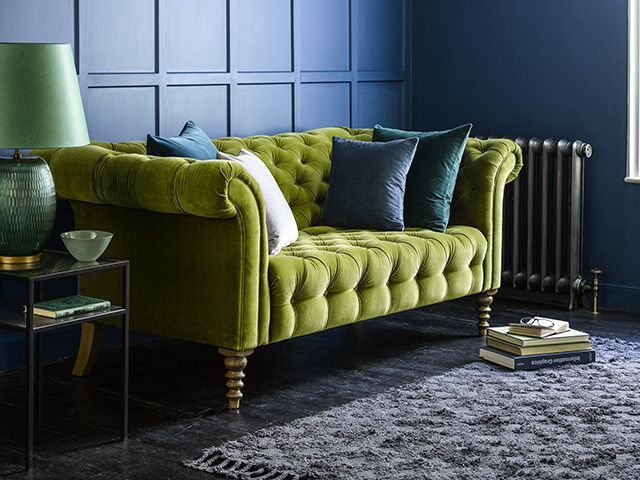
Photo: Sofa.com
Upholstery
A sofa is a big investment for your home, so you want it to last as long as possible. In a busy family home, this comes down in large to your choice of fabric.
For families with young children and pets, easy-clean fabrics are essential. You should also consider flatter textiles to avoid dog or cat claws catching and pulling up loops.
Lighter colour sofas are unfortunately not the most practical for our homes, especially in less durable fabrics. Patterned fabrics may date faster, but they do have the ability to hide marks and stains better than plain fabrics.
Leather and wool are both durable and easy to clean, but often more expensive than manmade materials. Traditionally, velvet sofas have been desirable, but easily stained and damaged, however, the likes of both M&S and Habitat have introduced revolutionary Aquaclean velvet fabrics to their sofa ranges, meaning this luxe look is achievable for a wider range of homes.
You should also consider where you’re placing your sofa. Fabrics fade in direct sunlight and that leather, while durable, can crack if it is too near a radiator.
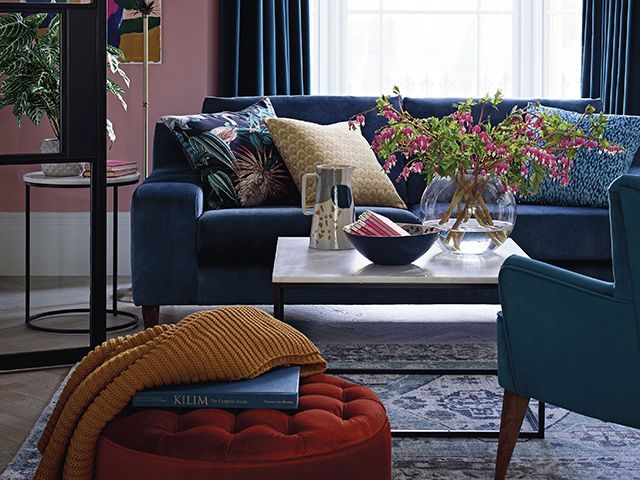
Photo: M&S
Depth
While you may have been sizing up the length of your sofa for your space already, it’s also important to not overlook the depth dimension of your new sofa. A deep sofa may given you a lot more room to relax on, but it’ll also eat up far more floor space that a shallower design. This Loaf Crumpet sofa is extra-deep at 102cm, making it the ideal sofa for snuggling up on if your room is big enough to accommodate it.
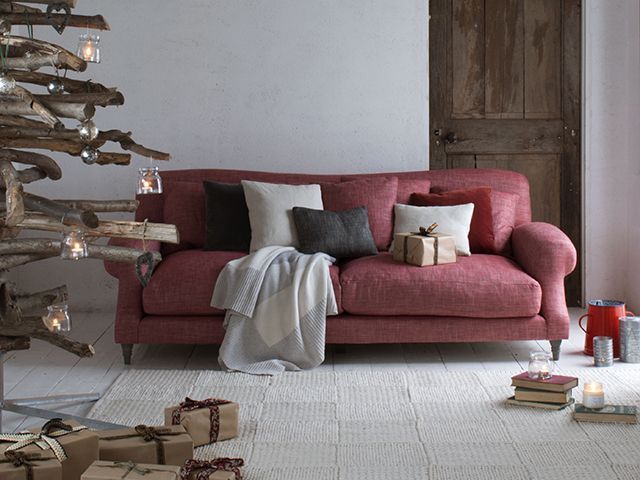
Photo: Loaf
Arms
Whether you opt for a classic design with a traditional P shape arm, or something with a slender arm like the Iggy from sofa.com, the key things to consider about the arms of your sofa are the height and width.
A tall arm will give a cocooning effect and give you another side to lean your back against, while something smaller works more effectively as an arm-rest and will have a less dominating profile in your room.
It’s down to personal preference, so always try and see (and sit on) a sofa in a showroom before committing to your purchase.
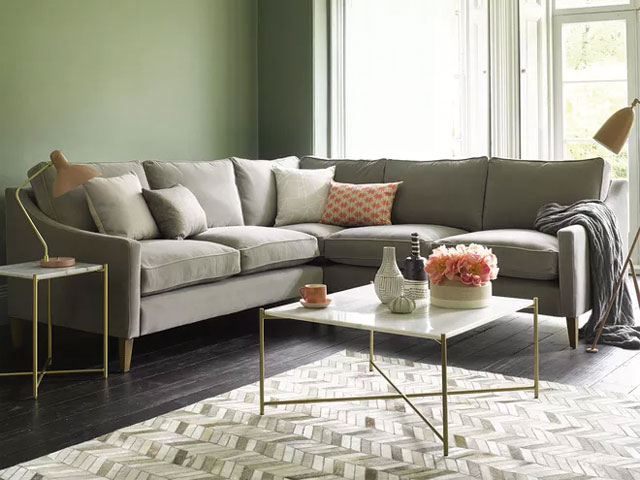
Photo: sofa.com




